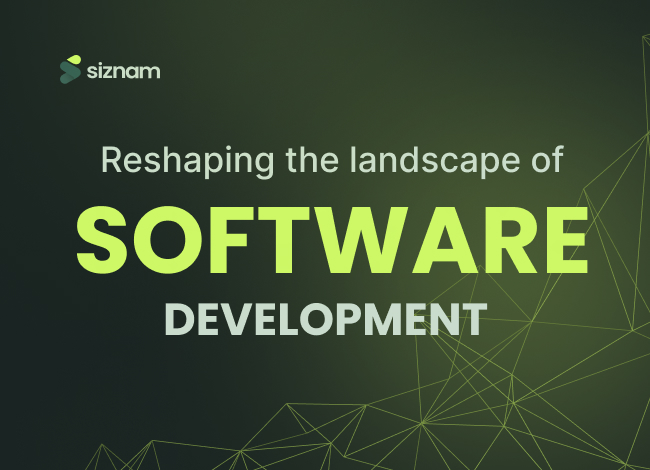Introduction
Advancements in technology have completely changed the way we work, communicate, interact, and connect. Now computers, software, and other tech devices have replaced the older means of communication and facilitations in companies. Every company has shifted most of their work to computers and software to simplify their business and boost up their performance. Nowadays every company is a nexus of several devices and operating systems that are connected to perform multiple tasks related to the companies and their production. These connected devices produce enormous amounts of data which is needed to be stored either on physical devices or on online cloud platforms. To make sure that the connection between the devices and the process of data storage is seamless, having a reliable wireless means of communication is very essential. For this purpose, cloud storage and cloud platforms were being looked at as a better solution but due to heavy amounts of data, now cloud platforms are not that much faster. This is the point where edge computing solutions come in and make the process easy and efficient. But what are these edge computing applications? What are their benefits? What advantages do these platforms have on cloud platforms? Let’s have a look at them
What is Edge Computing?
Edge computing architecture is the new way of storing data which has revolutionized the way software is designed, software developed, and deployed. These edge computing solutions are one of the most recent and exotic approaches toward reshaping the data storage procedure and edge computing architecture. Edge computing is not only different but also better than the older cloud computing platforms which provide a quick, efficient, and reliable data storage facility. Edge computing applications are the latest technology that brings computation and data storage closer to the point of data generation. This new approach is different from the old cloud computing platforms in the sense of data storage because the cloud platforms used to store data in centralized data centers that were located far away from the data generation point. On the other hand, in edge computing solutions data is processed and stored closer to the point of data generation which reduces latency, improves application performance, and enhances overall user experience.
Edge Computing In Layman’s Words
Although edge computing applications are very simple to understand, the concept can still be puzzling for some people. So let’s try to understand edge computing with some layman’s examples.
Consider you are craving a pizza and you think about ordering it from the pizza shop online. Cloud computing means you are ordering the pizza directly from the central pizza main factory which is their headquarters. This is the place where all the pizzas are created. In this case, you would have to wait for the pizza to be created and then to be delivered to your doorstep. This process is quite time-consuming as there’s a huge difference between your house and the area where pizza is created.
But when it comes to edge computing applications, it means ordering the pizza from a mini pizza kitchen set up in your neighborhood. When you order pizza from a place this near to your location, it takes comparatively less time than ordering from the central place of pizza creation. This makes the pizza delivery process faster because the pizza is ordered from a place near you. This is the basic difference between cloud computing platforms and edge computing platforms i.e., the difference between the area of data storage.
Difference Between Edge and Cloud Computing
Both cloud computing and edge computing platforms are primarily used for online data storage but both have some major differences between each other. Following are some points that prove that edge computing architecture is better than cloud computing:
Location of Computing Resources
One of the basic differences between the edge computing architecture and cloud computing platforms is their location of storing data. Where cloud platforms centralized computing data in large data centers located in remote areas, edge computing platforms store data closer to the points of data generation.
Latency and Response Time
Another very important benefit that edge computing trends provide over cloud computing platforms is the feature of latency and time-saving. Cloud computing platforms may show some latency in data storage due to the larger distance between the user device and data storage centers. On the other hand, edge computing trends make the data storing process faster by storing the data in storage centers near where the data is generated.
Scalability and Flexibility
Edge computing challenges and platforms also provide better scalability and flexibility over cloud computing platforms. Cloud computing platforms provide scalability and flexibility by providing on-demand access to computing resources. On the other hand, the edge computing challenges and platforms provide better scalability and flexibility by distributing computing resources across multiple edge nodes.
Data Privacy and Security
Another one of the most important edge computing benefits is better data privacy and security over cloud computing platforms. Cloud platforms provide less security about data storage because data is transmitted over long distances and stored by third-party users. On the other hand, edge computing architecture provides better data security by storing the data in the centers nearby to the point of data generation.
Benefits of Edge Computing
When it comes to edge computing, several edge computing benefits make it a better option than the old cloud computing platforms. It provides you with several edge computing benefits such as:
Reduced Latency
One of the prime benefits of edge computing solutions is their ability to reduce latency. They provide quick and efficient data storage by storing the data in the nearest data storage centers. These edge computing trends provide faster response times for applications and services, enhancing user experiences and enabling real-time interactions.
Improved Performance
Edge computing challenges also help in improving the performance of applications and services by minimizing the distance between the data storage and data generation points. This shortening of distance leads to quicker data processing, faster decision-making, and enhanced overall performance of systems.
Better Bandwidth Optimization
Another one of the main edge computing benefits is its ability to reduce the strain on the network bandwidth. Edge computing implementation reduces this strain by processing and filtering before transferring it to cloud platforms. This provides a better optimization of network bandwidth and reduces data transfer costs.
Enhanced Reliability
Enhanced reliability of the system is also one of the main edge computing benefits. Edge computing improves the reliability of the system by distributing edge computing resources across multiple nodes. This distribution enables systems to keep on working even if one edge node fails.
Improved Scalability and Flexibility
Better scalability and flexibility are other main benefits of edge computing implementation. Edge computing distributes edge computing nodes closer to the points where they are needed the most. This enables the systems to launch new nodes as per the increasing load resulting in increased scalability.
Increased Data Privacy and Security
Better data privacy and security is another main feature found in edge computing use cases. Edge computing increases data privacy and security by processing sensitive data at the edge. This is done by not transferring data to centralized servers or clouds saving the data from exposure to external threats. This also ensures compliance with data protection regulations.
Support for Real-Time Applications
With edge computing implementation, another very important benefit that you can get is the development of real-time applications that require fast data responses and low-latency responses. Various applications like autonomous vehicles, augmented reality (AR), and industrial automation benefit from edge computing’s ability to process data locally and make instantaneous decisions.
Cost-Efficiency
Another prime benefit of edge computing use cases is the cost efficiency. The edge computing process helps companies to save their overall cost of data storage. This computing system helps companies reduce their data storage costs by reducing the need for expensive network infrastructure and data storage at centralized data centers. This cost-saving is done by processing and storing data locally. This data is stored at the nearby nodes with the help of which the organizations can optimize resource utilization and reduce data transfer costs associated with cloud services.
Conclusion
Edge computing use cases have revolutionized the way we used to store and access data. It has surpassed the cloud computing environment by storing the data in a centralized data storing system near the points where data is generated. It provides several other benefits over cloud computing systems like Reduced Latency, Improved Performance, Better Bandwidth Optimization, Enhanced Reliability, Improved Scalability and Flexibility, Increased Data Privacy and Security, Cost-Efficiency, and Support for Real-Time Applications. Besides these and several other benefits, edge computing solutions can be your best option to boost up your system’s performance by improving your ways of data storage.







What do you think?
Hi there, just became alert to your blog through Google, and found that it’s really informative.
I am gonna watch out for brussels. I’ll appreciate if you continue this in future.
Numerous people will be benefited from your writing. Cheers!
Thank you so much for your kind words! I’m thrilled to hear that you found our blog informative and helpful. I appreciate your support and encouragement – it means a lot to us! We’ll definitely continue to share valuable content and insights in the future. Thank you for subscribing and staying tuned for more updates! If you have any topics or questions you’d like us to cover, feel free to let us know. Looking forward to connecting with you again soon!